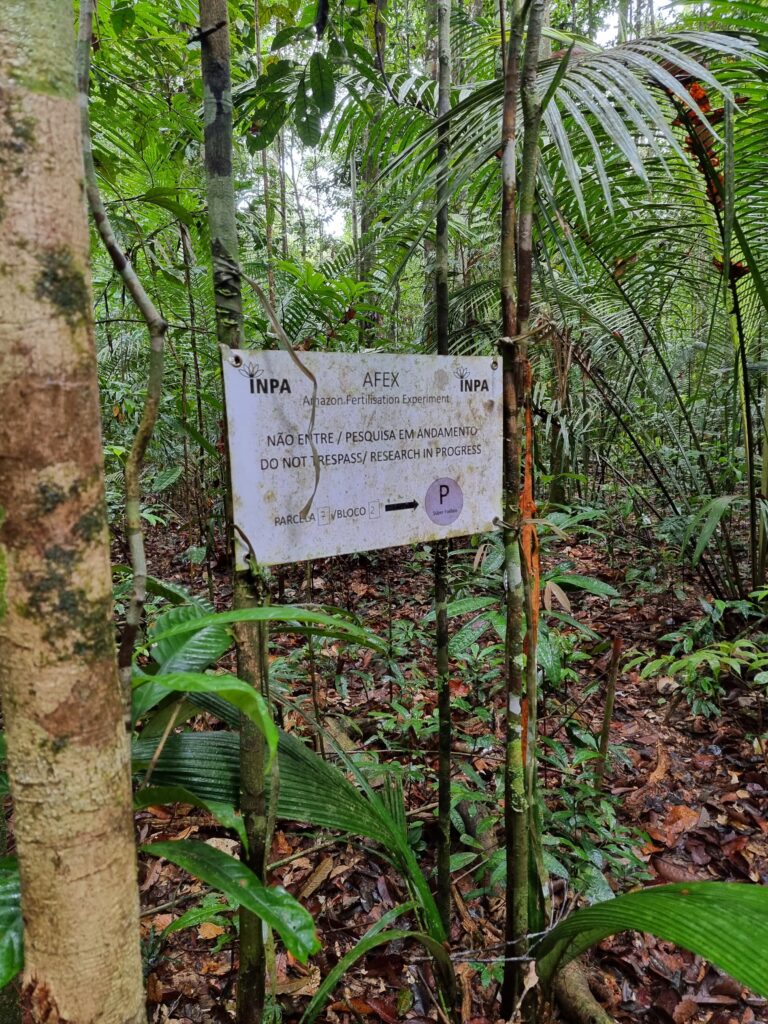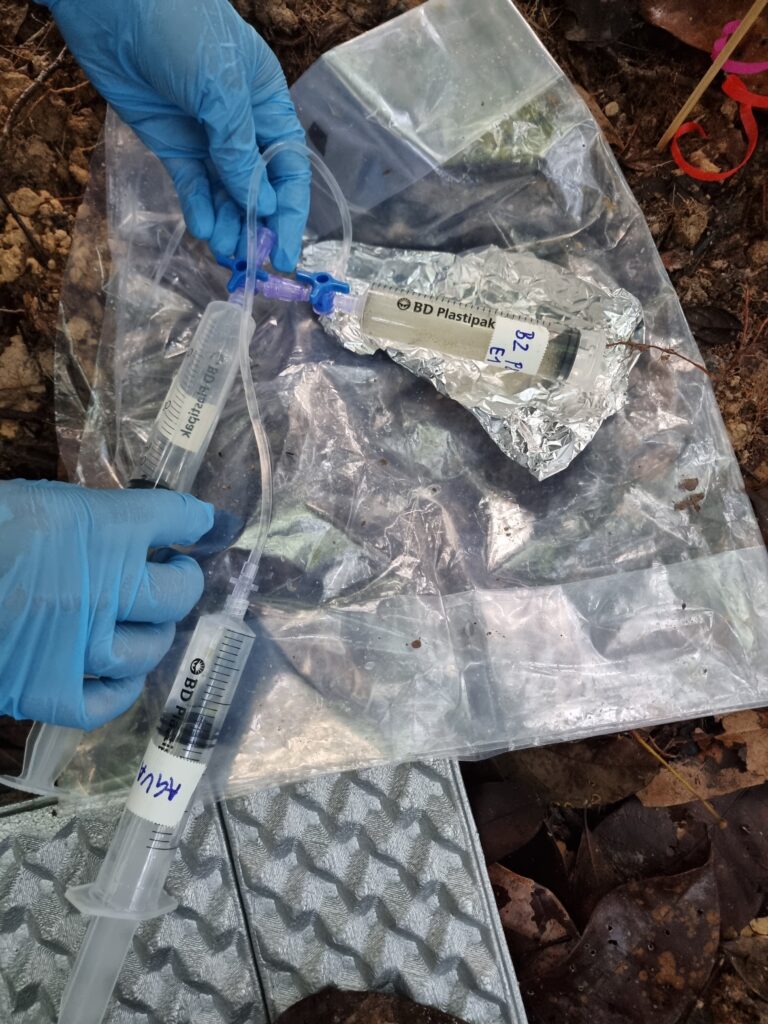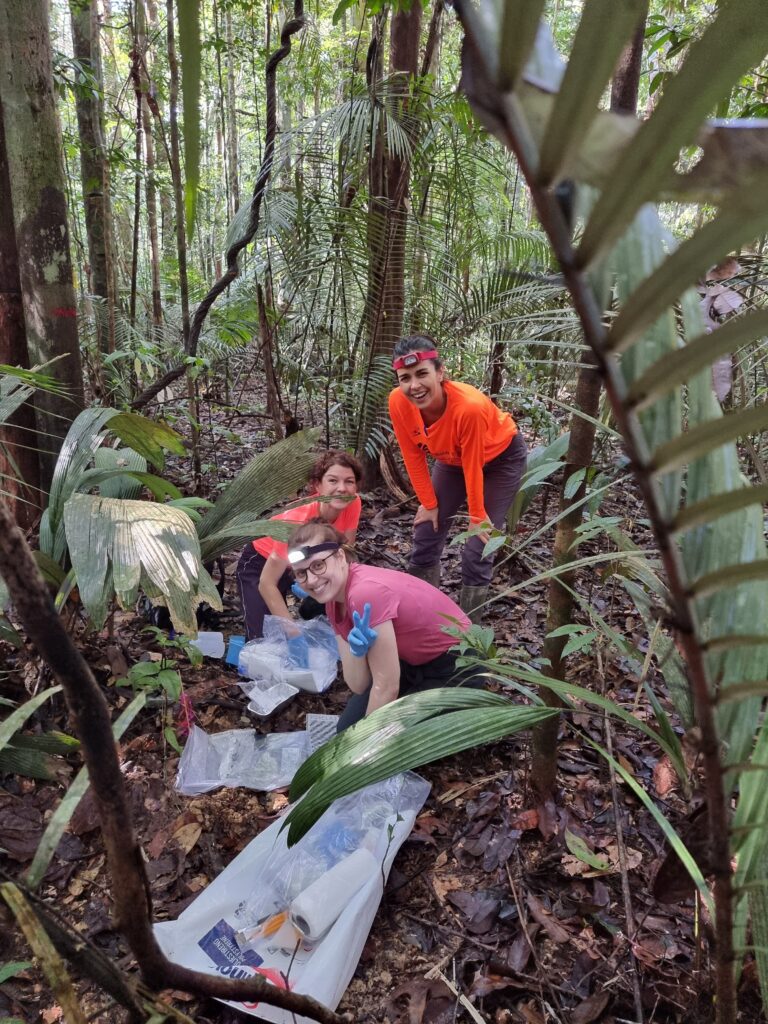In June 2022, Tatiana Reichert (TUM), Laynara Lugli (TUM), and Lucia Fuchslueger (University of Vienna) led a fieldwork campaign in a forest near Manaus, Brazil, to sample, for the first time, root carbon exudates in Amazon forests! Roots can release carbon compounds to facilitate phosphorus release from soil minerals and organic matter, and in this way, help plants acquire this nutrient. Phosphorus is particularly limiting in low-fertility soils in Central Amazon, so the investment in such a strategy belowground could be essential for forest functioning and ecosystem carbon cycling. To test the hypothesis that with sufficient phosphorus in soils, plants would invest less in releasing root exudates, we have sampled fine root total carbon exudation as well as the concentration of specific organic acids at the Amazon Fertilisation Experiment (AFEX).
As part of the goal of the Amazon-FLUX project, this was the first field campaign to determine how plants allocate carbon belowground to overcome nutrient limitation. This was the first time that in-situ measurements were taken in such a diverse forest, and of course, doing fieldwork in the hot and humid tropics is never easy! After more than a week in the field, the team performed lab analysis at the National Institute of Amazonian Research in Manaus and also at the University of Campinas in Sao Paulo, Brazil. Our PhD student, Tatiana Reichert, is leading the paper derived from this incredible field camping. We hope that soon we can share these valuable results with the scientific community.
Also, check a very special blog post we wrote for EGU here. There, we explain a bit more about our adventures in the jungle, how we, scientists, got to connect over our passion for roots, and the importance of such measurements in a future climate.




